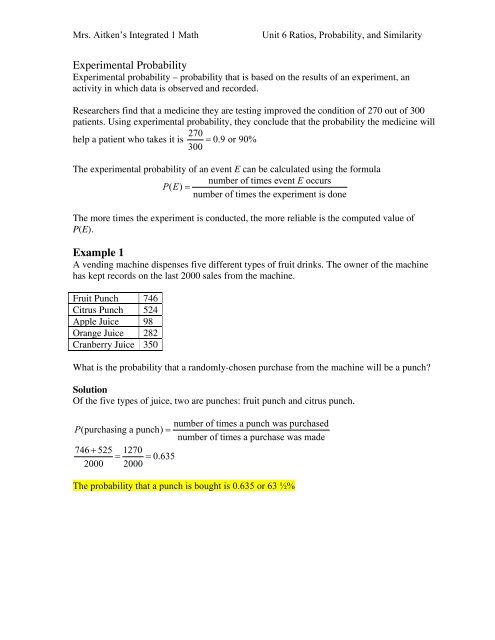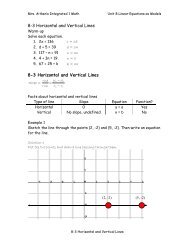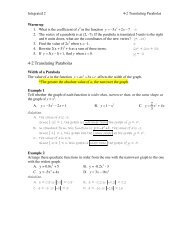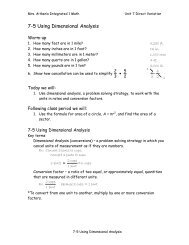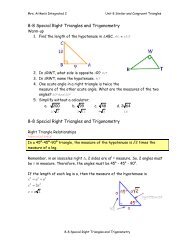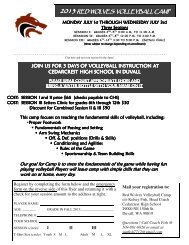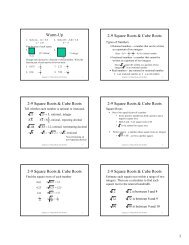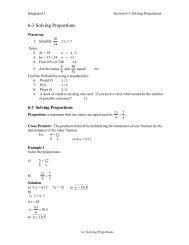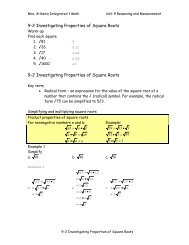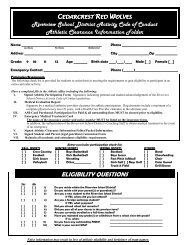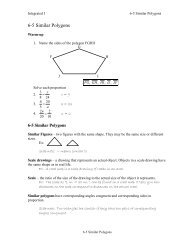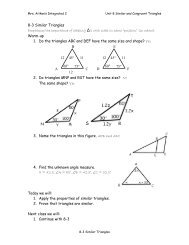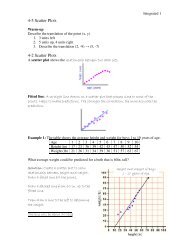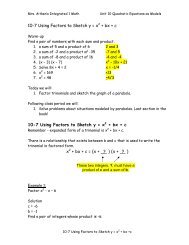6-2 Investigating Probability notes
6-2 Investigating Probability notes
6-2 Investigating Probability notes
Create successful ePaper yourself
Turn your PDF publications into a flip-book with our unique Google optimized e-Paper software.
Mrs. Aitken’s Integrated 1 Math<br />
Unit 6 Ratios, <strong>Probability</strong>, and Similarity<br />
Experimental <strong>Probability</strong><br />
Experimental probability – probability that is based on the results of an experiment, an<br />
activity in which data is observed and recorded.<br />
Researchers find that a medicine they are testing improved the condition of 270 out of 300<br />
patients. Using experimental probability, they conclude that the probability the medicine will<br />
help a patient who takes it is 270 0.9 or 90%<br />
300 =<br />
The experimental probability of an event E can be calculated using the formula<br />
number of times event E occurs<br />
PE ( ) =<br />
number of times the experiment is done<br />
The more times the experiment is conducted, the more reliable is the computed value of<br />
P(E).<br />
Example 1<br />
A vending machine dispenses five different types of fruit drinks. The owner of the machine<br />
has kept records on the last 2000 sales from the machine.<br />
Fruit Punch 746<br />
Citrus Punch 524<br />
Apple Juice 98<br />
Orange Juice 282<br />
Cranberry Juice 350<br />
What is the probability that a randomly-chosen purchase from the machine will be a punch?<br />
Solution<br />
Of the five types of juice, two are punches: fruit punch and citrus punch.<br />
number of times a punch was purchased<br />
P (purchasing a punch) =<br />
number of times a purchase was made<br />
746 + 525 1270<br />
= = 0.635<br />
2000 2000<br />
The probability that a punch is bought is 0.635 or 63 ½%


